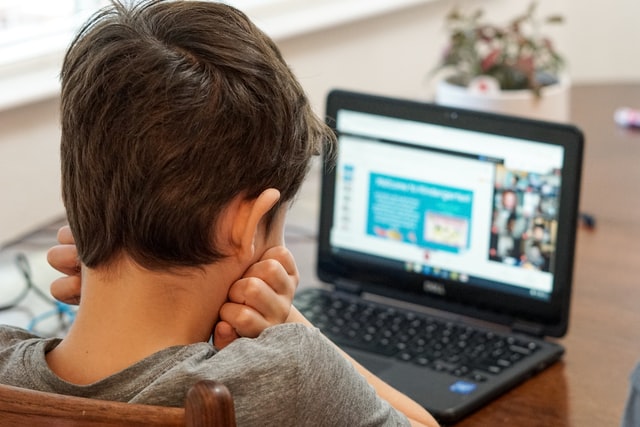Loic Menzies is the outgoing Chief Executive at the CfEY and is involved in projects across their work with young people. He is editor of the CfEY’s new book: Young People on the Margins, launching this week.
Alix Robertson is an Associate at the CfEY and contributing author to Young People on The Margins. Before joining the CfEY, Alix was an education journalist at sister papers FE Week and Schools Week, and prior to that, a secondary English teacher.
Two things we learnt about education and technology in the past year
The use of EdTech and virtual learning should continue as an integral part of learning for young people with SEND.
1Technology has real potential to shift the way that young people with SEND learn and enjoy activities going forward.
There have been some innovative approaches taking place for students with special educational needs and disabilities. It’s significant that there’s been a lot of positive feedback about remote learning for young people with SEND. For many, distance learning isn’t a stop-gap or a second-best option but is actually preferable in a lot of circumstances. For young people with SEND, learning in mainstream environments can bring with it a lot of challenges; some of those are taken away or reduced when you’re working at home.
We really want to see the use of technology and virtual learning continue after lockdown. Not as a solution to a problem, but as an integral part of learning for these young people. Making learning more accessible to students with SEND by offering opportunities for hybrid learning as the norm, rather than setting the expectation to be in school with a TA for every session.
It’s not just about having basic sufficiency, but about adequate access for all.
2As the world changes, we will have to start admitting that there’s a higher level of hardware and digital infrastructure needed to reach today’s essential levels.
One of the things that struck us in looking at the data on the digital divide, is the fact that the data makes it look like the divide has widened, not narrowed. The reason for that being that no one realised just how much hardware was needed in order to make online learning accessible.
People rapidly realised that if you had four kids learning from home, there was no way that one device would do the trick. There was a recognition that it’s not just about having basic sufficiency, but about adequate access to avoid families having to make difficult trade-offs over which child’s lesson takes priority. I was really ignorant about how unlikely it is for a lot of young people to have their own laptop, and there has been a naive assumption amongst many that young people had wider access to hardware that’s convenient to use for learning over a long period of time.
Key takeaways from the CfEY x Microsoft report
1Demand for tech varies significantly between subject and phase teachers. Tech providers should be asking why teachers in certain subjects don’t see the relevance or the need.
We quite often provide schools and learners with technology but it isn’t necessarily the technology they actually need or want. The Microsoft report was about asking teachers what they wanted and needed and what pupils would benefit from. Seeing how patterns played out about the use of tech in the classroom showed just how much demand varied between subjects and phases. For example, there was a high appetite for devices amongst art and primary teachers, but much less demand amongst humanities teachers. The report allows providers to reflect on what might be driving those patterns.
2There’s a big difference in the availability of tech between private and state schools, and that divide is only going to become more important.
It’s really important to recognise that there’s a big difference between the experiences of pupils in private and state schools. The report included some striking statistics in terms of what young people had access to. For example, 72% of students in schools that were rated inadequate by Ofsted don’t have access to individual devices in their classroom, compared to 59% in schools rated outstanding, and that’s just in the state sector. At state schools, one in three teachers has access to one-to-one technologies, compared to two in three in the private sector. That divide is worrying going forward considering that it’s only going to become more important.
3Safeguarding is important for everyone. Tech providers need to make sure that they’ve got robust provision for safeguarding and they communicate that really clearly.
There’s still a lot of anxiety around safeguarding online, and it’s an area where more training and guidance is needed. We need some hard and fast rules around safeguarding online to reassure teachers that what they’re doing is safe. Tech providers need to make sure that they’ve got robust provision for safeguarding and they communicate that really clearly.
The CfEY’s new book, Young People on the Margins: Priorities for Action in Education and Youth, of which both Alix and Loic are contributing authors, is out now. By drawing together more than a decade of studies, this book provides a new way of understanding the many ways young people in England are pushed to the margins of the education system, and in turn, society.

